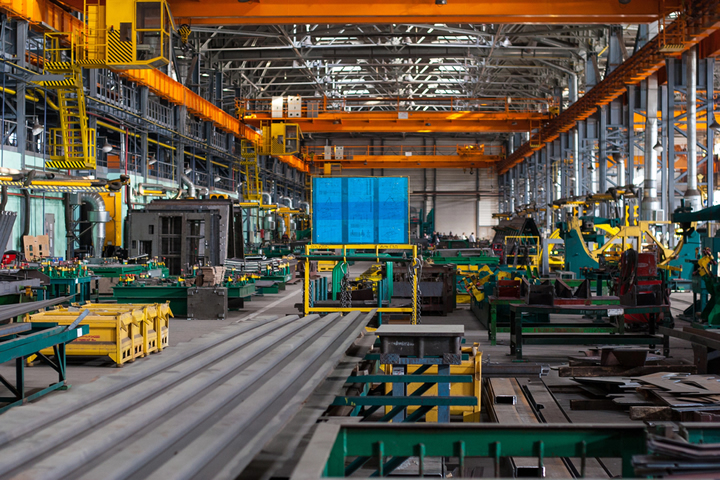Are Smart Coatings the Next Frontier in Factory Maintenance?

Proactive maintenance is essential to efficient factory operations. As more manufacturers have recognized this reality, more have poured money into technologies like artificial intelligence (AI) and Internet of Things (IoT). However, smart coatings may offer a more unusual but promising alternative.
What Are Smart Coatings?
Smart coatings are a vast category of paints and other finishes that react to external stimuli. Those factors could be an environmental concern like heat or humidity, but they can also cover things like physical impacts, corrosion and even the presence of some microbes.
Such a broad definition means these products also have an immense diversity of use cases. In 2011, researchers developed a spray-on antenna that, at a thickness of 8 microns or less, could give electronics wireless connectivity. In 2016, another group created a smart paint that reacts to the metal tip of specialized canes to help pedestrians with visual impairments navigate.
Some consider photoluminescent paints and insect repellent sprays a part of this category, too. However, most conversations about the technology today focus on more innovative applications.
While smart paint technology has been available for years, recent advances have made it more capable and practical. Facility operators can no longer ignore the potential these applicants have for improving factory maintenance.
Applications of Smart Coatings in Factory Maintenance
The uses of smart coatings in equipment care and repair are as diverse as the paints themselves. A few key use cases stand above the rest as particularly noteworthy.
Self-Healing Paint
The ability to self-heal is one of the biggest advantages of some smart paints for factory maintenance. Automotive companies have used self-healing clear coats for years now, with these polymers often reacting to sunlight to release a quick-hardening resin from within the paint.
Manufacturers can benefit from similar products. Naturally rebonding paints may be unable to fix major mechanical damage, but they can ensure scratches, chipping and warping do not lead to larger, sub-surface problems. Newer options can work quickly, too — a 2022 study developed a paint that takes just 30 seconds to recover completely when introduced to heat.
These coatings are most beneficial for equipment in harsh operating conditions. Boiler room machinery, vehicles and anything working in high heat or humidity all benefit heavily from maintaining a protective layer despite a punishing environment.
Condition-Based Maintenance
Some smart paint technology does not heal damage but changes color to indicate issues that may not otherwise be noticeable. Coatings that respond to the chemical changes presented by corrosion are a common and advantageous example.
Severe rust is clearly visible to the naked eye, but this degradation is not always easy to see in its earliest stages. A rust-reacting paint can produce a more dramatic color difference, so technicians can recognize the need for repairs before structural damage occurs. Such early corrosion testing leads to decreased maintenance costs, and enabling condition-based repairs with paint helps manufacturers avoid high IoT expenses.
Smart paints may not offer the same in-depth analysis as an IoT maintenance sensor. They do make some amount of condition-based care possible, which leads to fewer breakdowns and avoids unnecessary repairs. Considering the relatively low cost of these coatings, any improvement in this area is worth noting.
Anticorrosive and Antimicrobial Coatings
Other reactive coatings go a step further and can stop corrosion upon detection. One solution, based on a NASA-developed paint, releases anticorrosive inhibitors once pH levels indicate the presence of rust. While it cannot completely eliminate corrosion, it reduces maintenance costs by up to 50% by slowing its spread.
Combining such a coating with color-changing indicators could enable more effective repair procedures. Slowing corrosion before a technician can resolve the matter is mostly beneficial for smaller operations that may not always have a maintenance worker on hand.
Antimicrobial coatings present a similar benefit. Naturally antimicrobial elements like silver can add to paints’ protective properties, stopping the appearance or spread of bacteria, fungi or other contaminants. Semiconductor fabs and pharmaceutical production facilities will see the biggest improvements from this use case.
Electronics Protection
Many smart paint applications serve as alternatives to IoT and AI-based maintenance practices. However, this technology can also work alongside IoT and AI to improve their results. Reactive coatings can protect sensitive electronic components to ensure these more advanced systems remain reliable.
Antimicrobial, dust-resistant or scratch-healing layers can keep sensors in good condition and free of contaminants that may interfere with their readings. By minimizing these hazards, smart coats enable a greater level of data quality and consistency in IoT and AI applications like predictive maintenance. Considering how low-quality data leads businesses to lose millions of dollars annually, this seemingly small optimization produces substantial savings.
Alternatively, some facilities may use smart paints to protect solar panel cells from sun damage or react to heat to increase their efficiency. Such changes would reduce the ongoing care costs of renewable energy, making it easier for manufacturers to meet climate targets.
Remaining Challenges With Smart Paint Technology
While the applications of smart coatings in factory maintenance are vast, this technology is not perfect. Self-healing paint and anticorrosive coatings may be impressive, but they are not complete care solutions. They can only account for small damage and cover a limited range of operating concerns, so additional tools and technologies are still necessary.
As such, smart paints can push facility maintenance investments further, but they cannot replace other innovations entirely. This may lead to high upfront costs, even if the coatings themselves are not expensive compared to IoT and AI technologies.
Many of the most disruptive smart coating applications are also in their early stages. More dramatic self-healing, damage prevention and reactive polymers have not seen extensive real-world testing, especially in their newer, more promising forms. Consequently, it may take ongoing research and development before they are ready for large-scale industrial use.
Smart Coatings Have Impressive Potential for Manufacturers
Smart paint technology may be imperfect, but its potential still demands attention. Manufacturers cannot afford to miss these opportunities amid rising demands for reliable maintenance and long-term cost-effectiveness.
In practice, reactive polymers are most valuable as part of a larger repair optimization strategy. No single innovation is a complete fix in and of itself. It takes a broader, multifaceted approach to get all a factory can out of its equipment care workflows.
Featured Product

